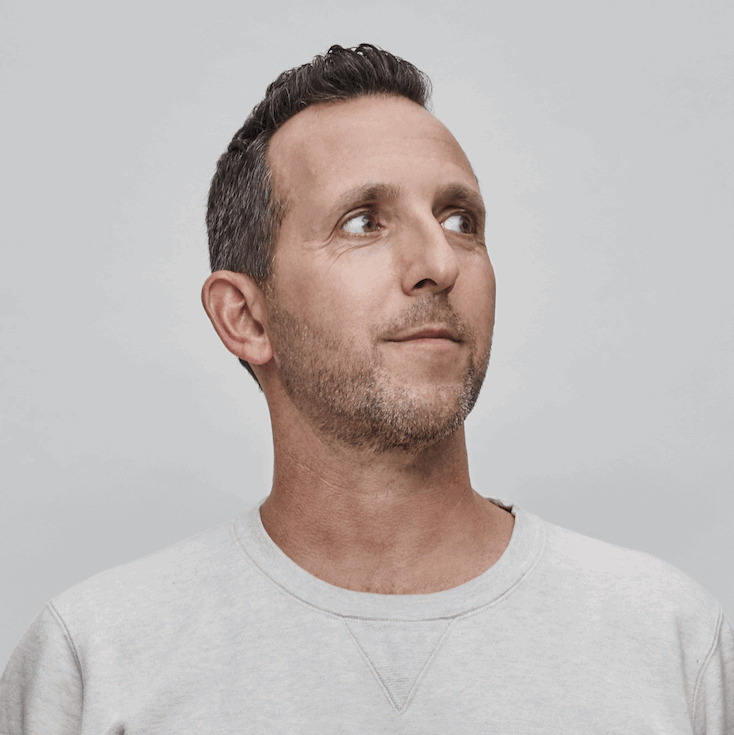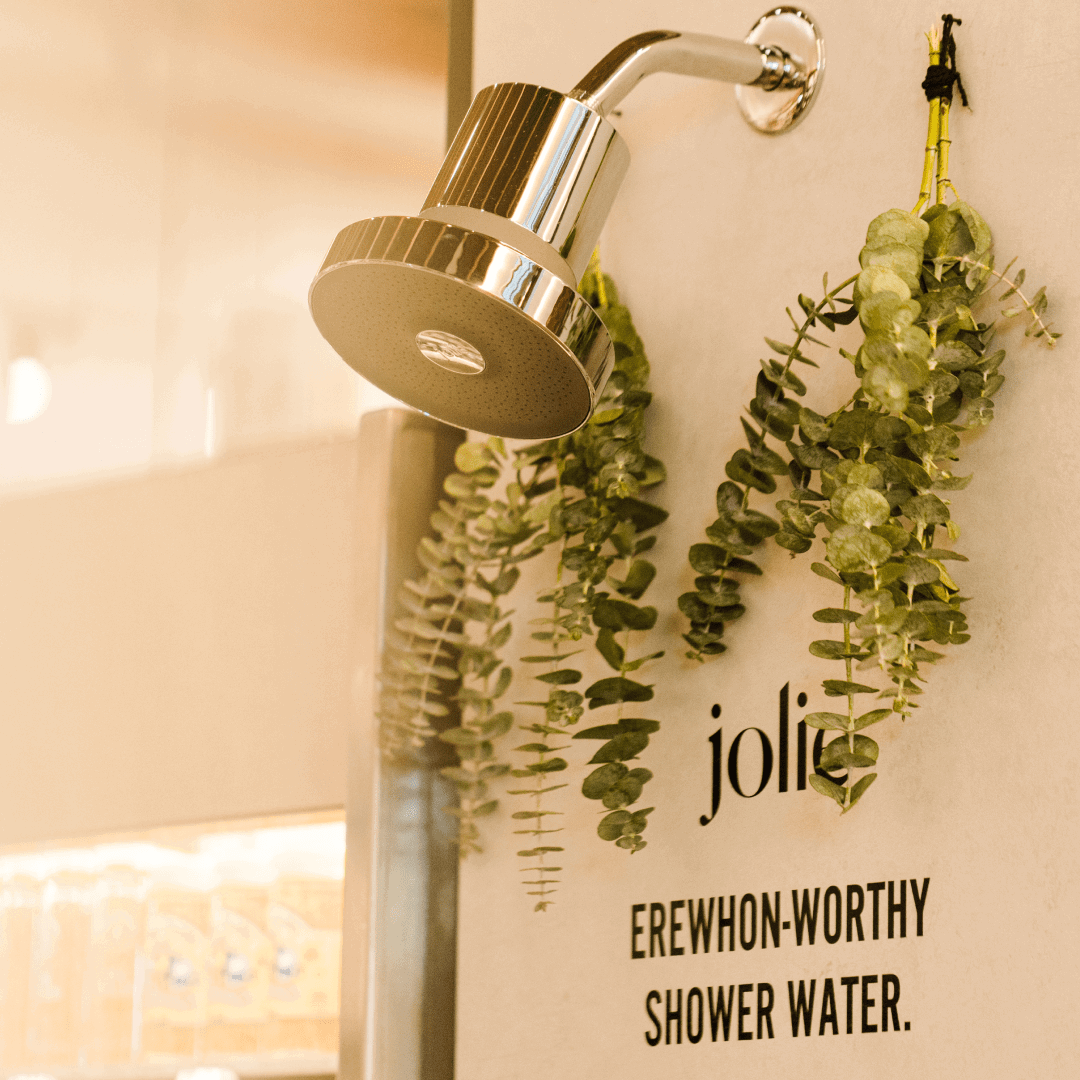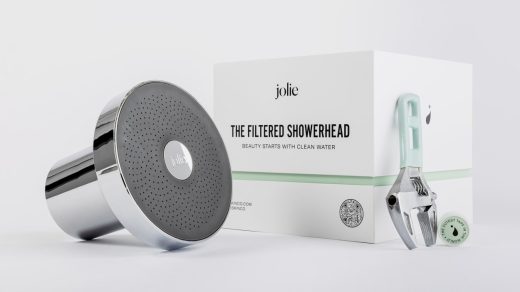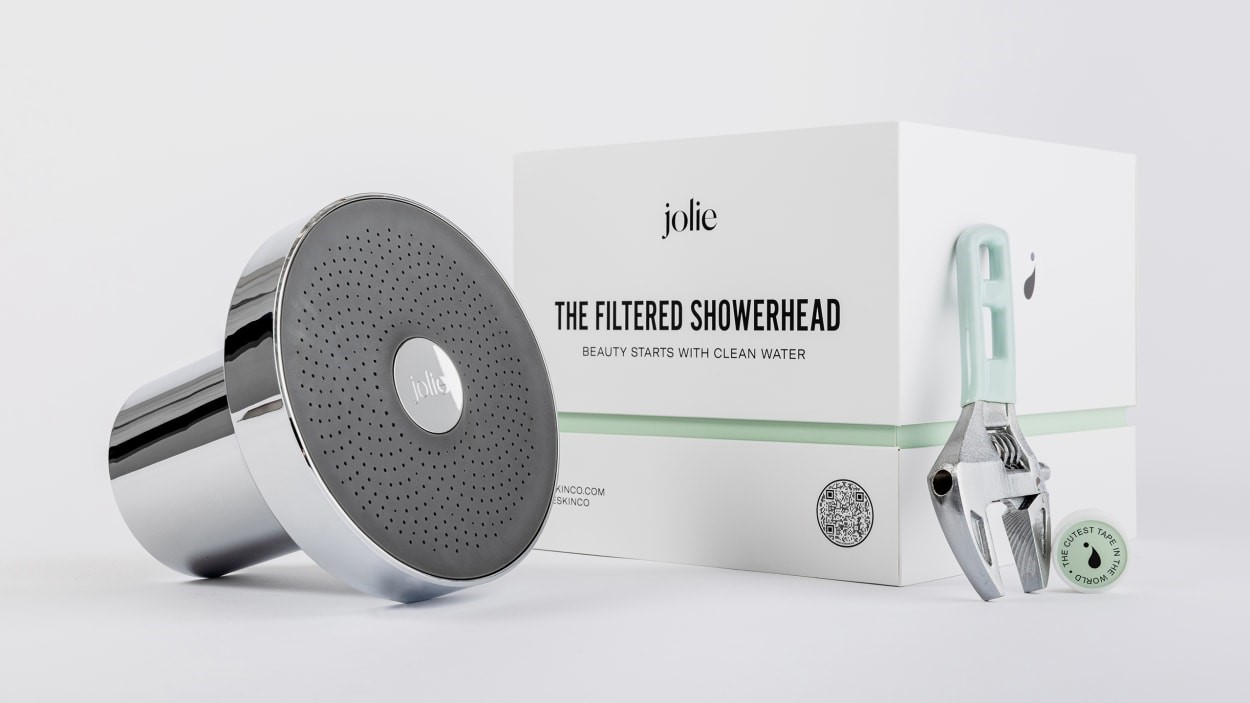Why the next big haircare brand might be selling showerheads, not shampoos
Whatever you do, don’t call Jolie a plumbing company. “We are not a hardware company. We are not a shower company. We are a beauty-wellness company,” insists Jolie cofounder Ryan Babenzien. It just so happens that the beauty and wellness transformation he’s aiming for takes place in the shower. And it starts with water.

His two-year-old company sells a filtered showerhead that promises to remove chlorine, heavy metals, and other contaminants. The pitch: Showering with purified water will naturally improve skin and hair. Chlorinated water, Jolie claims, can leave skin dry and irritated, cause split ends and dull hair, even fade hair color, and speed up the loss of collagen.
Selling customers on a $165 showerhead as a skin and haircare staple is a bank shot, but it appears to be working. Babenzien says that his company has sold 140,000 showerheads so far. He expects revenue to surpass $25 million this year, with Jolie’s subscriber base worth $10 million in annual recurring revenue. Customers can get the showerhead for $148 if they sign up to spend $33 every three months for a replacement filter. Babenzien says the churn rate for filter subscribers is less than 1%, and the company is profitable. Not bad for a sneakerhead-turned-beauty-maven.

Jolie’s origin story dates back to 2019, when Babenzien sold his direct-to-consumer sneaker company, Greats, to Steve Madden. While on holiday with his wife (whose name is Jolie), Babenzien began thinking about his next project, and narrowed it down to a few requirements: It had to avoid inefficiencies, especially the many sizes—and returns—that come with selling apparel. It had to be focused on vanity (“because people are vain,” he says). And it had to center on something we do habitually, every day (because “changing consumer behavior is very, very hard”). He threw it all on a whiteboard in his home office and looked at it for a long time.
Babenzien says his aha moment came to him in the shower (naturally). In the winter of 2020, he noticed his legs were dry no matter how much lotion he applied. He started researching tap water and discovered that its contaminants, like chlorine, could be harsh on skin and hair. A little digging unearthed confirmation that plumbing pipes were standardized across North America. “And then I had a shower thought: We could create a beauty wellness company that purifies the water for better skin, hair, and health,” he recalls.
A mutual friend introduced Babenzien to Arjan Singh, who had previously worked at Boston Consulting Group and at small brands across fashion, hospitality, and lifestyle industries. Singh loved the showerhead idea, and they paired up.
Neither wanted to go the traditional venture capital route, so they instead raised money through friends and family. They also, crucially, saw traditional direct-to-consumer companies weighed down by rising customer acquisition costs. Instead of investing in big marketing campaigns, they decided to seed the product with influencers before launch, hoping that the beautiful bathroom fixture would get people talking, creating an organic flow for their clean-water messaging. Recurring revenue would come from a subscription model for filters. And products would be available on Jolie’s own website and elsewhere. Today, the company sells through Amazon, Goop, Bluemercury, Erewhon Market, and Anthropologie, among other retailers. Department stores like Bloomingdale’s and Nordstrom sell the showerhead—categorized under “beauty and cosmetics”—as do more than 50 hair salons.
“Most of the beauty products out there are Band-Aid solutions that certainly don’t tap into skin and hair issues from a fundamental perspective,” says Singh. His cofounder agrees: “The beauty industry has really overlooked the source of eczema, dry skin, brittle hair.”
Jolie launched in December 2021, and word spread about this everyday object that promised to transform hair after just a few days. It also helps that the showerhead comes with a wrench and an easy-to-use installation guide. That lent a hand for the brand earning millions of views on TikTok, when beauty and wellness influencers started uploading videos of the installation process and plugging the results to their followers.
“There was a sense of FOMO that we instantly recognized, particularly among those who would maybe call themselves influencers,” says Singh. “People would reach out and say, ‘Hey, I’ve seen Jolie all over my Instagram, friends are talking about it, I would love to work with you guys.’ There’s all these little stories . . . people saying, ‘I was sure it was my pipes. You’ve now confirmed that.’” It helps that Jolie has a memorable name—and that pretty much no one can tell you the brand of their own showerhead.

Employees at Jolie keep the conversation going online by asking influencers not about their beauty regimen, but about “shower thoughts”—existential questions like, “What do you value most about yourself and why?” The brand has hosted water-themed events at a house they rented in the Hamptons and chef-led dinner parties in New York focused on oysters, the “water filter” of the sea. All are engineered to create community and buzz. They’ve also sent filthy trucks around New York City that said, “What if we told you that your shower water was dirtier than this truck?” They even made a video series that celebrates water, which included fashion designer and dedicated surfer Cynthia Rowley.
All that semi-organic community building has led to more than 15,000 pieces of user-generated content since launch. “We look at marketing through the lens of water, which is a really elastic space to play within,” says Babenzien. With the endless possibilities that clean water provides, Jolie’s founders hope that filtered showerheads will one day be as common as drinking-water filters—whose use among Americans has grown from 13% to 77% in just the past decade.
The key is whether Jolie can stay ahead of the pack. Though it started the conversation connecting filtered showerheads to beauty, it’s certainly not the only showerhead on the market. And the buzz and conversation that it’s creating could very well drive customers to seek out different and cheaper models. This kind of dynamic proved to be the Achilles’ heel of once market-defining brands like Casper (mattress in a box), Away (hardshell luggage), and Allbirds (wool sneakers).
Babenzien says they have a product road map that will keep the brand out in front. “We have to solve for the bathtub, where we bathe our children. And we have to solve for the sink because that’s where we wash our face almost everyday. And we believe that, as a brand that is used daily and trusted as a beauty wellness product, the future can allow us to go into more traditional hair products.”
So don’t be surprised, in other words, if Jolie comes full circle and one day starts selling shampoo via an endcap at Erewhon.
(19)



